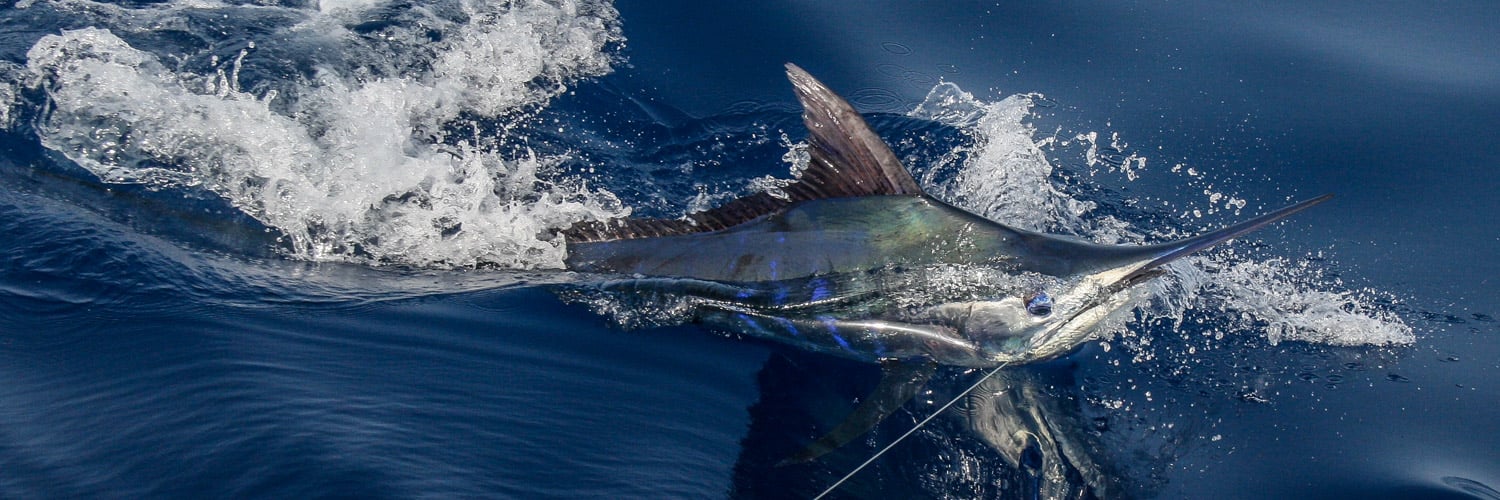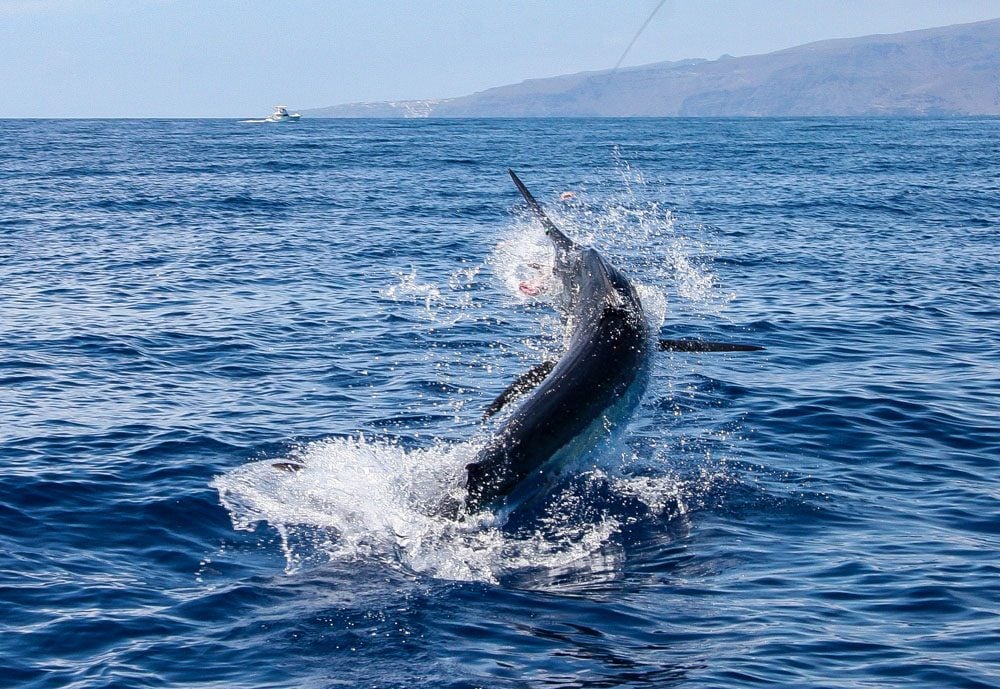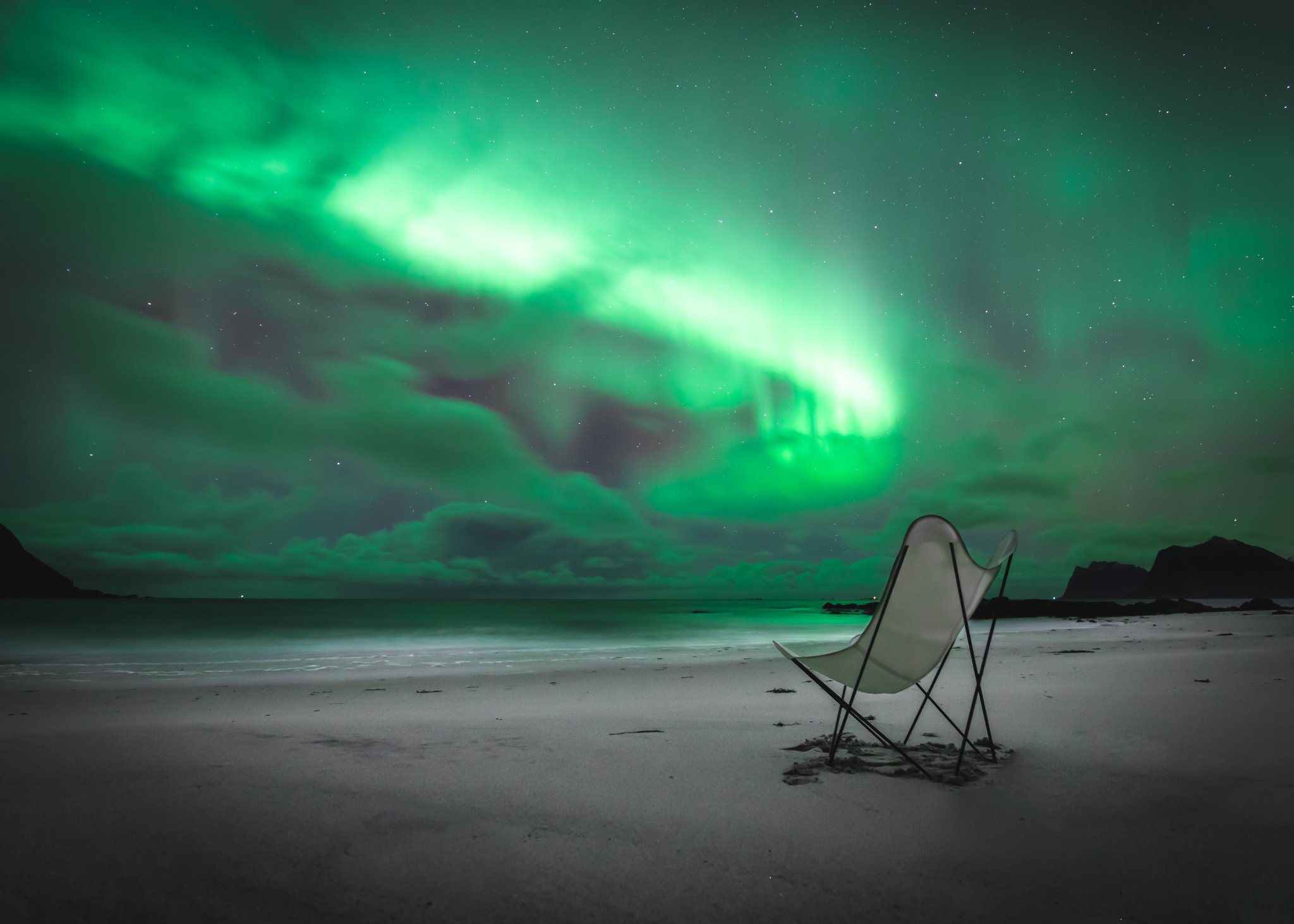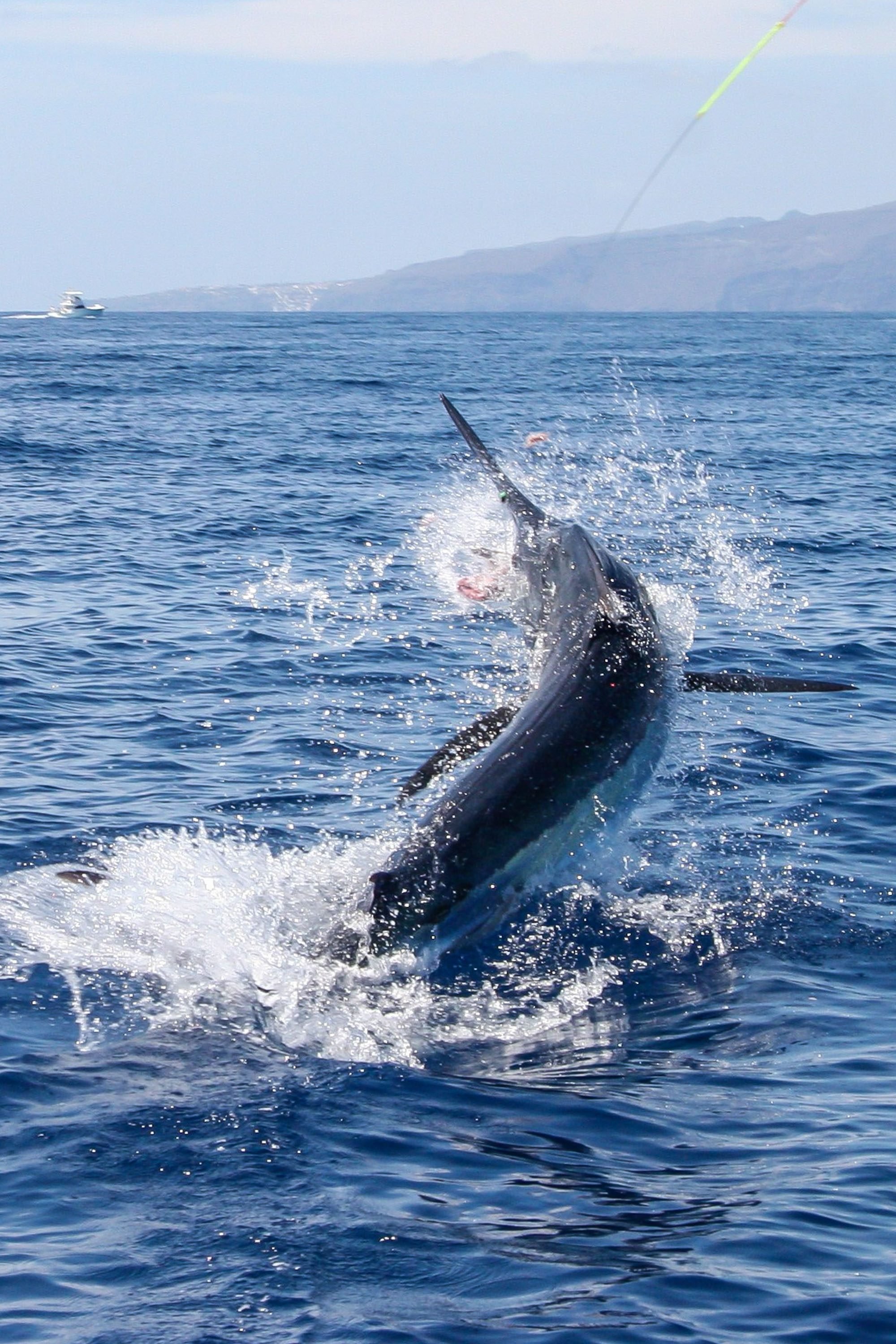

The Canary Islands is a Spanish archipelago in the Atlantic Ocean, consisting of seven large and several smaller islands, all of volcanic origin. At their closest point to the African mainland, they are 100 kilometres (62 miles) west of Morocco, located on the African Tectonic Plate.
The Canary Islands have plentiful natural attractions, climate and beaches and tempt thousands of tourists each year. Being islands, they are also surrounded by the Atlantic’s rich blue waters, making them a popular destination for big game fishing and the travelling big game angler.
Out of the seven large islands, La Gomera, the second least populated and oldest geologically, is a favourite amongst anglers. With it being one of the most productive Islands around the Canaries and along with the big game boats we have access to, you will not find a better place to target Blue Marlin. They run around in big numbers and grow to an incredible average size.
The charter boats in La Gomera predominantly fish for the Blue Marlin; however, each year, the Giant Bluefin Tuna fishing is getting better and better.


La Gomera is the ideal big game fishing destination for anyone who does not like long flights. It is also perfect for a family fishing holiday as the island is packed with other attractions to keep the entire family entertained. You will be fishing some of Europe’s most prolific waters for species such as Blue Marlin and massive Giant Bluefin Tuna.


Average Customer Satisfaction Score 100%


La Gomera is the perfect destination for a family fishing holiday as the island is packed with other attractions to keep the entire family entertained.
If you want a relaxing holiday around the pool or soak up the atmosphere on the stunning beaches, La Gomera is perfect. If you fancy something a little more adventurous, then you can explore over 600 kilometres of mysterious trails.
The famous landmark of Los Organos is well worth a look too. It consists of five vast blocks of rock formed from the remains of a once-powerful volcano. The pillars of rock look very similar to organ pipes, hence Los Organos’ name; this guards the Garajonay National Park entrance, a laurel forest and a green mass of prehistoric vegetation unique to the Macaronesian region.
La Gomera offers good local food and drink, and there are several great little restaurants in the capital where the marina and accommodation are. The food and drink are also very cheap, which is a bonus. There are various shops and supermarkets all within 10 mins walk from the boat too.
Due to the steep underwater terrain, the Blue Marlin fishing starts when you leave the marina, meaning no time is wasted motoring miles offshore.
La Gomera, blown by a northeasterly wind called the Trade Wind, can be reasonably choppy; however, where we fish in the south of the island, it is entirely protected by land and relatively flat calm.
Fishing the calm water in the island’s lee will give you an excellent opportunity to fish for world record Blue Marlin, Bluefin Tuna, Bigeye Tuna, Albacore, Yellowfin, Spearfish and White Marlin.
The sea fishing in the Canary Islands is a specimen hunters paradise, especially for the giant Blue Marlin and, more recently, Bluefin Tuna.
The crown jewel for big game fishing, La Gomera is home to two Blue Marlin line-class records.
The islands are 800 nautical miles north of Cape Verde and 250 nautical miles south of Madeira, right on the big Blue and White Marlin’s migratory path.
Due to the shape of the island, prevailing winds and underwater terrain the baitfish, that attract the game fish get stacked up on the southern end of the island during the summer and make a fertile feeding ground for visiting pelagics.
Along the coasts, the daily average temperature ranges from 18 °C (64 °F) in January and February to 24 °C (75 °F) in July, August, and September. The weather is typically Mediterranean, with maximum rainfall in winter and a minimum in summer, with virtually no rain in the warmest months.
Once again, the north-east trade winds play a massive role in the climate and are most intense during the warmest hours and in the afternoon, and often blow at around 50 kph (30 mph). The cool and breezy weather conditions can make it pleasant to sunbathe; however, the suns rays are still powerful, so there’s the risk of sunburn without appropriate precautions.
There are two seasons for the two main species. The first is from February to May, the perfect time to target the Giant Bluefin Tuna. The Blue Marlin then follows on from this, starting to show around the middle of May and through to September.
Big game fishing on the Canary Islands is one of the very few destinations you can reach from the UK with a short-haul flight. There are many flights with many different companies from all over the UK.











